Tags
Dublin, humor, Ireland, Irish, James Joyce, St. Patricks Day, Ulysses, University of Chicago, Yeats
Happy St. Pats day to everyone (because tomorrow we’re all Irish)! Hope you enjoy this repeat of a story from a few years back. And always remember:
Tá aois ag rá in Éirinn le haghaidh beagnach aon rud a dtiocfadh leat a rá.**
(**There is an old saying in Ireland for almost anything you might say.)
Happy Saint Patrick’s Day!)
I’ve always loved Ireland.
Sure, when I was little, I worried about Irish eyes which could, according to my Irish mother’s favorite song, smile. I pictured shamrock clowns with happy-faced grins tattooed across their pupils. But somehow, despite my obvious need of ongoing coulrophobia therapy for all things Bozo, I was still a sucker for anything Irish.
I entered the University of Chicago as a biology major. That lasted until my first-year required literature class taught by Frank Kinahan, newly-hired professor of Anglo-Irish lit. Our initial encounter was less than auspicious. My first assignment, a five-page paper on Ode to a Nightingale, was returned with a polite inquiry in red at the top as to the level of intoxication that led me to misspell “nightengale” through the entire paper. But it only took one impassioned Kinahan lecture on William Butler Yeats to have me trying to explain to my befuddled advisor why I was switching majors to focus on the writers of the Irish literary renaissance.
Over the next four years, I took every class Kinahan taught, including the notoriously difficult one on James Joyce’s Ulysses. When I graduated and told him I was taking myself on a tour of the Ireland of O’Casey, Synge, Yeats, Joyce, and Lady Gregory, he gave me two pieces of advice: eat in pubs because Irish restaurant food sucked, and hitchhike because it was a safe and excellent way to get to know the country.
Then he handed me a bright pink ping pong ball, a map marked with times and places, and my last assignment for him. When writing Ulysses, Professor Kinahan reminded me, James Joyce exhaustively researched every aspect. He even consulted tide tables to determine proper timings for a crumpled bit of paper which is thrown into the River Liffey, spotted during Bloom’s afternoon wanderings through Dublin, and finally sighted as it drifts out to sea. My job was to check Joyce’s accuracy by tossing Kinahan’s ball into the River Liffey, and verifying whether it showed up on Joyce’s schedule.
On his advice, I toured Ireland with my thumb stuck out. I lived on pub sandwiches and pints of Harp laced with Roses Lime as I hitched to Yeats’ tower. Almost everyone who gave me a ride wanted to know if I knew their cousin in Chicago or Boston or New York. Most wanted to show me their pile of crumbling rocks in the upper field that they assured me had been a castle. I spent one night in the beautiful thatched-roof cottage of a couple who picked me up. I think I broke the nose of one too-friendly driver. Yet another group of musicians insisted on taking me to the pub they were playing in that night, and we all ended up sleeping in the room above the bar because we stayed out too late and the owner of our guesthouse locked her front door and went to bed.
Eventually, I did make it to Dublin. If my life was a novel, I would have faithfully tracked the path of Kinahan’s pink ball and reported back, both creating an allegory for my future life, and forging a professional relationship that would define my character going forward. There were at least three reasons that could never have happened.
- I’m map-impaired. I know there are people with godlike directional gifts who can just look at a map and translate “north” into “turn right” or “hang a left.” I can look at a map, and (if I’m having a good day) manage to refold it along the original creases.
- This was before the plaques marking Bloom’s route through Dublin were installed, so my killer ninja plaque-reading skills were wasted.
- More importantly, it was after I was old enough to drink. So any vestigial map-following instincts were quickly buried by my default response: “Look! A pub!”
![Fact. When Joyce first published Ulysses, nobody could understand it. He had to send out a cheat sheet listing the various clues connecting the wanderings of his hero Leopold Bloom with those of the classical Ulysses. Many ended up doing what Vladimir Nabokov did to keep track, and creating his own map of Bloom's route. [Image Credit: OpenCulture.com] http://www.openculture.com/2013/08/vladimir-nabokov-creates-a-hand-drawn-map-of-james-joyces-ulysses.html](https://barbtaub.com/wp-content/uploads/2014/03/tumblr_lzjwldosbh1r65ss8o1_1280.jpg?w=529&h=402)
Fact. When Joyce first published Ulysses, nobody could understand it. He had to send out a cheat sheet listing the various clues connecting the wanderings of his hero Leopold Bloom with those of the classical Ulysses. Many ended up doing what Vladimir Nabokov did to keep track, and creating his own map of Bloom’s route.
[Image Credit: OpenCulture.com]
In fact, I did toss that ball into the Liffey at the appropriate start point, and made an attempt to track its path. Many pints of Harp scientific observations later, I had seen no sign of that ball. By the end of the day, I had a group of new BFFs gathered with me in front of what I thought was the last spot. Our glasses were empty It was getting late and I had just about given up when a flash of pink drifted past.
If my life was a novel, the sight of that ball floating by more or less on schedule would have confirmed my decision to become a great writer like Joyce or a brilliant academic like Kinahan, or even to write the definitive PhD thesis on floating trash in Ulysses. Instead, in the coming years, I completely forgot about that little ball. Frank Kinahan died tragically young. I served time as a journalist. The ghost of James Joyce had no comment.
But a few weeks ago, I remembered the pink ball again as I stood in Dublin looking at the River Liffey. To my surprise, I am a writer now and this trip encompassed a different odyssey. With my mother’s recent death, I was looking for connections to her Irish family roots. Traveling (in my own car this time) with my sister and her husband, we saw an Ireland that was a world apart from the one I’d heard about in Frank Kinahan’s lectures, or from the one I visited decades ago. Roads are lined with mcmansions that would be at home in California suburbs. Restaurant food is flat out fantastic.
At a stop at the Rock of Cashel, we found a plaque on a house proclaiming the birthplace of one of my mother’s relatives, the famous theologian John Lanigan. The sign next to it invited people to come in and visit the museum housed within. Score! We knocked, but the older man who finally answered said that the museum was closed for the winter, and anyway he had his doubts about the plaque’s accuracy. When we explained our connection, he suggested we look up the owner, whose shop turned to be on the way back to our car.
As we passed, a man came out and introduced himself as Bernard, the museum’s owner. I told him we were looking for information about a relative, John Lanigan, and asked if he would mind showing us anything he might have relating to him. Those were pretty much the last words I got in. Bernard’s face lit with the fanatic zeal of a knight asked if he might like a holy grail or two, or maybe a PMSing woman offered chocolate and potato chips. He opened his mouth and didn’t shut it again for two and a half hours. We followed him through his museum, duly admiring the paintings (done by his brother-in-law), the life-sized figures of families dying of starvation during the Troubles (done by his brother), the “last” gypsy caravan in Ireland (in which, he assured us, a family had raised thirteen children), the clandestine chapel where disguised priests secretly celebrated outlawed sacraments. We nodded, exclaimed, followed, and did not hear one thing about John Lanigan.
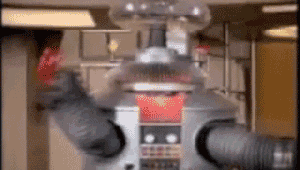 When Bernard finally wound down to a pause, I opened my mouth to ask again about our relative. But my sister was behind him, waving her arms in the universal “Danger, Will Robinson” sign and mouthing “NO!”. Next to her, my poor brother-in-law shook his head vigorously.
When Bernard finally wound down to a pause, I opened my mouth to ask again about our relative. But my sister was behind him, waving her arms in the universal “Danger, Will Robinson” sign and mouthing “NO!”. Next to her, my poor brother-in-law shook his head vigorously.
A day later, we were in Dublin overlooking the River Liffey, and I was thinking about connections. My pink ping pong ball was gone along with my academic aspirations. My family’s Irish heritage seems disconnected with the affluent new country that is Ireland today.
But some connections never change… “Look! A pub!”
I’ve always loved Ireland!

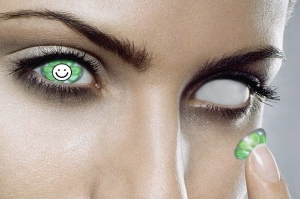
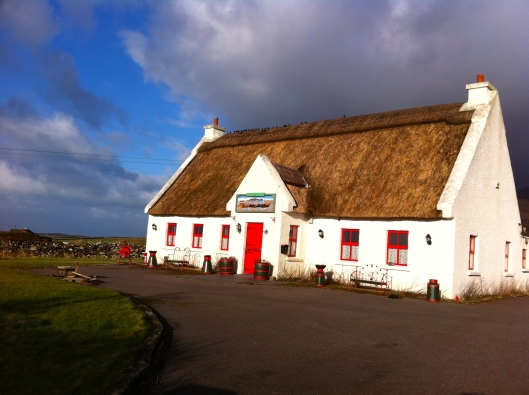
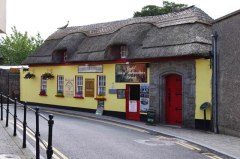
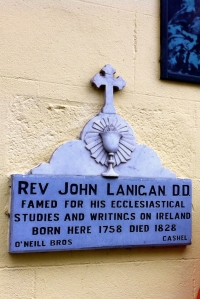
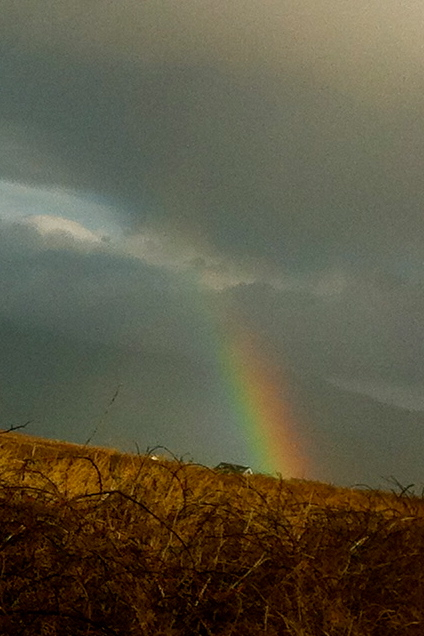
I can’t help wondering where that little pink ball is now. Perhaps it found its way into a pub somewhere and never left. I regret that I’ve never been to the Republic Ireland, much as I’d love to go. I have traveled around quite a lot of Northern Ireland and enjoyed visiting a number of the pubs there. It was quite something to see the local people play a couple of excellent sets of folk music, and then swap their instruments around and play a couple more.
LikeLiked by 1 person
Sadly, it floated out to sea, probably heading to Liverpool for a bit of Beatlemania.
LikeLiked by 1 person
Off it bobbed on its own unrecorded adventure. 🙂
LikeLike
Such a cool St. Paddy’s Day story Barb. When all else fails, time for the pub. Ha! Love it. The pink ping pong ball story is great too – as well as the museum that had nothing to do with its namesake. And the random occurrences that happen when one hitch hikes. great, great memories. I really think sometimes that we would be more sane if we let go of all expectations for a few weeks or months a year and just randomly experienced the world. The problem being it requires money and that’s not always an option. When I was married and our kids were teens -old enough to care of themselves with neighborly oversight – my wife and I used to take two weeks a year and just drive randomly all over eastern and central Canada. We just decided at each intersection which direction to turn and stopped when we found a motel we liked. It was a lot of fun and we saw all kinds of cool stuff.
Happy St. Patrick’s Day Barb!
LikeLiked by 1 person
Well, you probably wouldn’t want to hitch in Ireland these days. On the plus side, the food is now fabulous! I love your idea for a road trip. My (then) roommate and I did the same (alas, only once) when I was at University. We ended up in Door County at a fish boil. Loved it SO much that years later we got a little cottage there, and went every summer with our own kids. That random road trip paid off and then some.
LikeLiked by 1 person
Have you read travelling round Ireland with a fridge by Tony Hawks. A hoot. Sounds like a great experience.
LikeLiked by 1 person
You know, I’ve heard about that book for a while now but (yes, I’m THAT cheap) never wanted to pony up the asking price. But looks like I should really go for it. Thanks for the tip!
LikeLiked by 1 person
Enjoyed reading this Barb. Unbelievably, for being so close, I’ve never made it to Ireland but I will, sometime soon I’m hoping. 🙂
LikeLiked by 1 person
We should do a road trip! For the last trip, we took my little car over on the ferry and then we were able to drive everywhere. So fun.
LikeLike
I would ‘like’ this comment but like so many things recently I seem to have lost the ability (bloody technology!) anyway that sounds like a fabulously fun idea…love a road trip 😉
LikeLiked by 1 person
Reblogged this on Judith Barrow.
LikeLiked by 1 person
Thank you so much for the reblog Judith! I really appreciate it.
LikeLike
We’ve been quite a few times to Ireland (North and South) – to story-telling weekends. Great fun!!. Jx
LikeLiked by 1 person
Love your writing, Barb! If my life were a novel I would have found your pink ping pong ball just the other day leading to much musing about the smallness of the world and the patterns our life make.
Then again, who knows?
I do know I’ll be keeping an eye out for it…unless I get sidetracked at the pub.
Cheers!
LikeLiked by 1 person
The pub you say? Maybe I should come on over and help you keep watch?
LikeLiked by 1 person
Yes, I think so. I have too many pints, er, um, waterways to handle myself 😉
LikeLiked by 1 person
Reblogged this on Musings on Life & Experience and commented:
Barb’s trips to Ireland.
LikeLiked by 1 person
Thanks so much for the reblog! I really do appreciate it. And Happy St. Patricks Day!
LikeLiked by 1 person
You’re most welcome for the reblog, and Happy St. Patrick’s Day to you also, Barb. 🙂 — Suzanne
LikeLike
Perfect St. Pat;s Day story, right down to getting stuck listening to the very long yarn at the museum.
LikeLiked by 1 person
I’m still curious about that plaque, but not enough to try again!
LikeLike
thanks for information
LikeLike
I think Ireland today is quite disconnected with its past. Sadly.
LikeLike
Most Americans have a history that only goes back a generation or two, so finding our roots means connecting with other cultures. Maybe some in Ireland don’t feel the need to learn about a past that’s always been theirs, while we Americans are still looking to define ourselves by finding who our ancestors were.
LikeLiked by 1 person
Good point. I hadn’t thought of it like that at all.
LikeLiked by 1 person